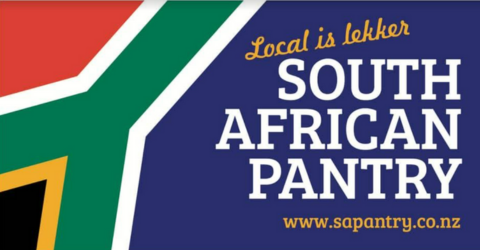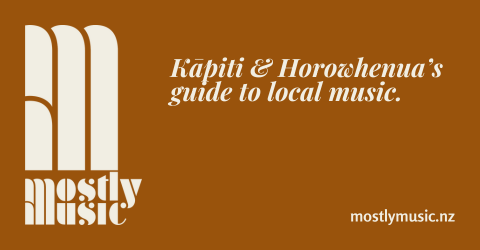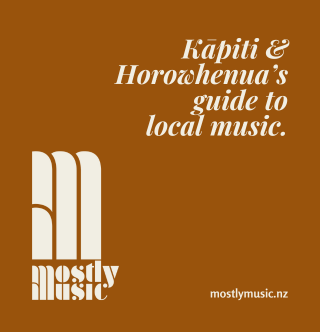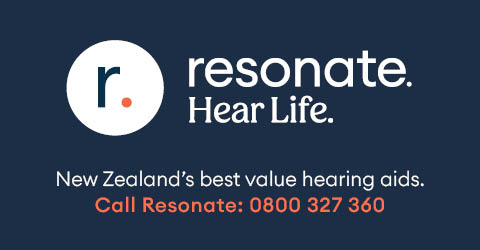
The emergence of Covid-19 has caused much more than just a health crisis. Economic carnage has accompanied the pandemic, starting with China and spreading around the world even faster than the virus.
New Zealand was hit hard well before a single case had crossed the border, as China stopped importing goods as diverse as logs and lobsters. Now, as countries around the world shut themselves down to try and control the virus, economies are grinding to a halt and jobs are being lost at a rate not seen since the Great Depression.
The most controversial aspect of the pandemic has been the difficult choice between saving lives or saving the economy. Different countries have taken wildly different approaches, from India’s “lockdown with four hours’ notice” to Brazil’s “hold mass rallies, everything’s fine”. I agreed with New Zealand’s decision to impose a strict lockdown early, but I fully expected the country to pay a high price for the lives saved. While my job was secure in the short term, I’ve spent long enough in the public service to know that things would get rough over the next couple of years.
I accepted the “lives versus economy” orthodoxy until about halfway through level four, when a report on the BBC World Service offered a different perspective. I was so intrigued that I went online to find the original source of the report, which had the title “Pandemics depress the economy: public health interventions do not: evidence from the 1918 flu”. A nice summary of the paper written by the authors, who work for the Federal Reserve Bank of New York, has an even more emphatic title “Fight the pandemic, save the economy”.
The contention of the paper was that while there had beene obvious economic impacts as the flu swept across the USA, those impacts were the result of the pandemic itself, and not the measures put in place to control it. Furthermore, they indicated that cities which had longer lockdowns had both a lower mortality rate and better economic performance over the next year. In effect, they argued, an effective public health response leads to better economic performance.
It’s unfair to consider these results as being directly applicable to the current pandemic without considering some of the important differences. The most critical difference is probably that the 1918 flu was especially hard on the young and healthy, aged 20-40 (although older people were not spared, and those over seventy also had a high mortality rate, as did the very young). In general, the young and healthy are the most economically productive, so it’s understandable that such a disease would have a major economic impact. Covid-19 is hardest on the elderly and those with other medical conditions. While there are plenty of people who are older or have pre-existing medical conditions who are productive, the different demographics of the two pandemics must have an influence.
However, thinking about the differences in the two pandemics also got me thinking about the similarities, and why we might just see a similar effect with Covid-19.
The argument certainly works when taken to the extreme. The most effective public health response would be one which stops the disease becoming a pandemic in the first place, and if the disease never got out of control, then there would be very little economic impact at all. Many emerging infections, such as Marburg, Hendra, Nipah, MERS and Sin nombre, fall into this category, crossing from animals and causing alarming and deadly outbreaks, but too small and too isolated to affect the global economy.
The 2002-2003 SARS coronavirus outbreak, which has many similarities with Covid-19, is more revealing. Economic costs of epidemics are usually calculated based on medical costs of treatment and, sometimes, forgone income due to people being unable to work or dying. However an analysis of the 2002-2003 SARS coronavirus outbreak found something quite different. With just over 8000 infected and just under 800 dead, the medical costs and losses in productivity were globally insignificant. However SARS was estimated to have cost the world around US$40 billion, with losses of GDP of around 0.5% for Taiwan and Singapore, 1% for China and 2.6% for Hong Kong. These impacts were attributed to several different mechanisms, but the most significant was thought to be the way people changed their behaviour in response to the outbreak.
SARS, like Covid-19, had a habit of getting on planes and spreading to new countries through international travel. Nearly 30 countries recorded cases, and among those hardest hit were Hong Kong and Singapore, major travel hubs. Retail, food service and tourism were all affected, as people stayed home and stayed away, afraid of catching the new virus. There were more indirect impacts as well. The uncertainty created by the outbreak reduced confidence in the affected economies, particularly China, deterring investment. The response from the Chinese government probably magnified the uncertainty and created distrust in comparison with the current pandemic, China’s response was fragmented and opaque. The first that the world knew of SARS was when it spread from mainland China to Hong Kong.
The cost of SARS tells us something which appears obvious when pointed out of course people change their behaviour in the middle of an epidemic. A new disease, especially one which spreads as fast as Covid-19 has, is frightening. Those of us over forty remember the emergence of AIDS, and I know I can remember a real sense of fear, even though the demographics of the infected didn’t really overlap with people I knew at that time. Covid-19 spreads much more easily people have picked it up simply by sitting in the same room as an infected person. While there are those who feel that they are fit and healthy and therefore not at risk, they are all likely to have family members who are more vulnerable, so they may still be fearful of going out because of who else they may infect.
Even if the government doesn’t impose restrictions on gatherings and movements, stories of clusters linked to bars, weddings and cruises start putting people off. Among my family and friends, there were people going into their own personal lockdowns at least two weeks before the official one began. Also well in advance of the official lockdown, my office asked most staff to work from home at least half time, and some branches sent all staff home. The reduction in people working in the CBD would have had immediate impacts on coffee sales, as well as retail and other businesses. Wellington’s Irish Society cancelled its St Patrick’s Day celebrations. My choir cancelled its Easter concert. All over New Zealand, individuals and organisations looked at the rapidly developing disaster across the world and made their own decisions. Whole sectors of the economy began to shut themselves down.
All of this happened before New Zealand had 100 cases of Covid-19. What would be happening in places like Italy as doctors died and hospitals overflowed? In New York as stories came out of decomposing bodies abandoned in refrigerated trucks because there was no space at the funeral homes? In Spain as horrific stories began to emerge from nursing homes? Whether or not a government imposes a lockdown, it is simply absurd to imagine that the economy would be unaffected, the restaurants and bars bustling, throngs of tourists coming and going then recommending the destination to their friends.
It’s not hard to find reasons why it may be the pandemic itself which leads to a recession, and not the lockdowns imposed to control it. But it’s harder to think why a stricter lockdown might lead to a stronger economic recovery, which raises the question of whether the effect seen with the 1918 flu applies just to that pandemic, and not pandemics generally. Perhaps, for example, it was because the 1918 flu was particularly hard on people in their 20s and 30s.
We won’t be sure of that for a couple of years, but there are some compelling reasons to think that it wasn’t just a one-off case, and that a better response for public health is also better for the economy. The most obvious possibility is that a swift, effective response works more quickly to control the disease, and therefore things can get back to normal more quickly.
In New Zealand, the easing of restrictions a month ago has not seen a jump in case numbers. While it is still possible that there are undetected cases in the community, every day with no new cases gives greater confidence that the virus has been effectively contained. But this has not been the case in some other countries. For example, both China and South Korea countries which had reasonably effective responses had a jump in case numbers after restrictions were eased. The situation is likely to be worse in countries with less effective responses, such as the UK and US. While Australia is now easing the restrictions and hasn’t had a spike in numbers, they have been consistent at around 10 cases a day since late April. While their less strict lockdown has allowed more businesses to keep operating, it’s surely a false economy if it drags out the outbreak, and restrictions, for a much longer time.
A slower and less effective response, as well as taking longer to control the disease, affects the confidence of both the public and businesses. In countries where community transmission is still rife, people may be reluctant to go back to bars and restaurants, to get their hair cut or to take holidays. People may still be afraid of getting sick, or passing the virus on to vulnerable relatives. There are certainly people in New Zealand who are not yet going out and about, but there’s a definite sense of normality in the places that I have been, and a good level of confidence that the virus is under control. It may be a long time before New Zealand has many international tourists back, but we are likely to be much less restricted within our own borders than many places over the coming year. It is hard to predict the difference this will make to the economy, but it does give us a better chance than many countries.
The less confidence that the public has in the control measures, the less confidence in the government as a whole, with corresponding impacts on business confidence. If the public are reluctant to come back, businesses may be worried about their cashflow. If case numbers jump, businesses may fear having to close again. In countries where the response to Covid-19 has been disorganised, ineffective and confusing, where leaders have switched strategies or failed to communicate clearly, general confidence in the government erodes. This can be clearly seen in the UK, where “botched” would not be an unfair description of their approach.
These are the more obvious reasons why an effective public health response may be better for the economy, but there is another possibility. This reason is something that I hadn’t considered as part of the economic impacts as I started this article, but I came across as I continued my research, turning over a few figurative stones. It comes from a report from Deloittes in Australia, reviewing the impacts of the Black Saturday fires, Queensland floods from a decade ago and the Newcastle earthquake back in 1989.
Much has been made of the mental health impacts of lockdowns, such as isolation and people losing their jobs. Less has been said, so far, about the trauma of the pandemic itself. But we simply cannot ignore what this will mean to countries like Italy, the UK, Iran, Spain, Brazil and the USA. Losing a relative to a disaster such as an earthquake or a pandemic, even if they were old and frail, brings a tone to the shock and grief that’s just not the same as when they die in a more expected way. The loss is intensified if there are questions of whether human action, or inaction, made that disaster worse. Many will be wondering whether someone they loved died because their government was negligent, because a staff member in a shop, bar or care home was careless, or because someone attended a wedding or a funeral after ignoring warnings to stay home if sick. Many will blame themselves for passing on the infection to others, perhaps to someone in their family who later died. In the worst affected areas, where death rates are double or more the normal rate, that is a lot of shock, guilt and grief crammed into a short time.
Some of the worst emotional impacts of the pandemic must surely fall on medical staff. Accounts from doctors and nurses paint a grim picture as hospitals are overwhelmed with desperately ill people. As they care for the sickest victims of this pandemic, they are short of resources and forced to make difficult choices about priorities, all the while watching their colleagues sicken and die with a new disease they don’t fully understand.
After the SARS outbreak, post-traumatic stress disorder (PTSD) was reported in many healthcare workers, survivors of the disease and people quarantined to manage disease spread. I haven’t been able to find data on healthcare workers specifically, but the percentage of people who get PTSD after a life-threatening illness involving intensive care treatment is reported to be between 14% and 59%. And 20% of the victims of SARS were healthcare workers. In the context of the SARS epidemic, which infected only 8096 people globally, that works out to somewhere between 250 and 950 healthcare workers with PTSD, never mind people who weren’t healthcare workers. For Covid-19, with such staggering numbers of cases and deaths, that’s a massive number of traumatised people.
This is where the report from Deloitte comes in. For each of the three disasters they considered, the economic costs of the social impacts were at least as much as the cost of the direct impacts. The lasting impacts on mental health, including substance abuse and addiction, made up a significant proportion of those costs. And because they only counted social impacts where there was sufficient data, they stated that their cost estimates were conservative.
The economic costs of this pandemic extend far beyond lockdowns, physical distancing and other control measures. We can expect huge costs on mental health systems, as well as lost productivity among those who survive, saddened and traumatised by this global tragedy. And that is just taking a purely financial view, without any thought of the human suffering that so many are now enduring.
In New Zealand right now, businesses are suffering and people are losing their jobs, and many people must be wondering whether the country can really afford what we have done to stop Covid-19. Now that we’ve had a week with no new cases and only one active case remaining it’s hard for some to hear that we need to remain in level 2. But it’s worth sticking with what the medical advice tells us, and getting our public health response right, not just to save lives, but to save the economy as well. What we absolutely cannot afford is to get our response wrong and let Covid-19 get out of control again.
When New Zealand first went into alert level four, I thought about what a hard choice the government had had to make devastating our economy to save lives. But now, I realise that it may not be a hard choice at all. There is no either-or. When we made the choice to “be kind”, the choice to protect the lives of our most vulnerable people, it seems as if we made the choice to protect our economy too.
For more from Melanie Newfield see: https://theturnstone.substack.com/










































